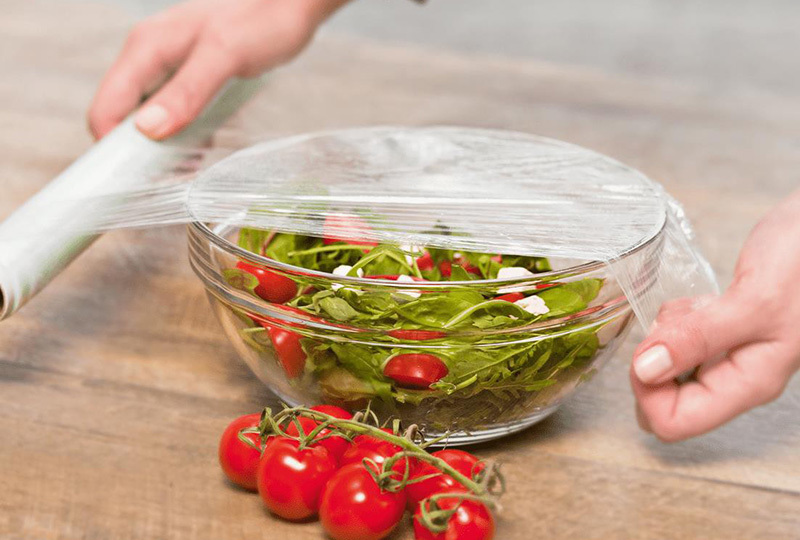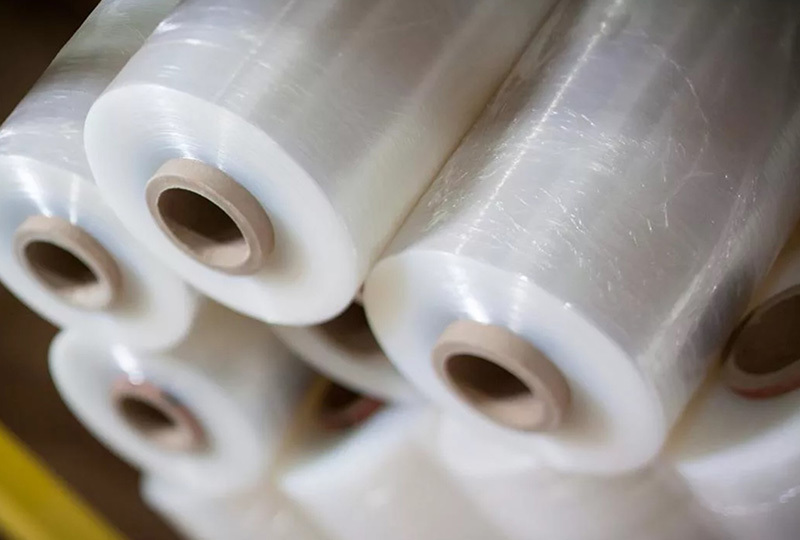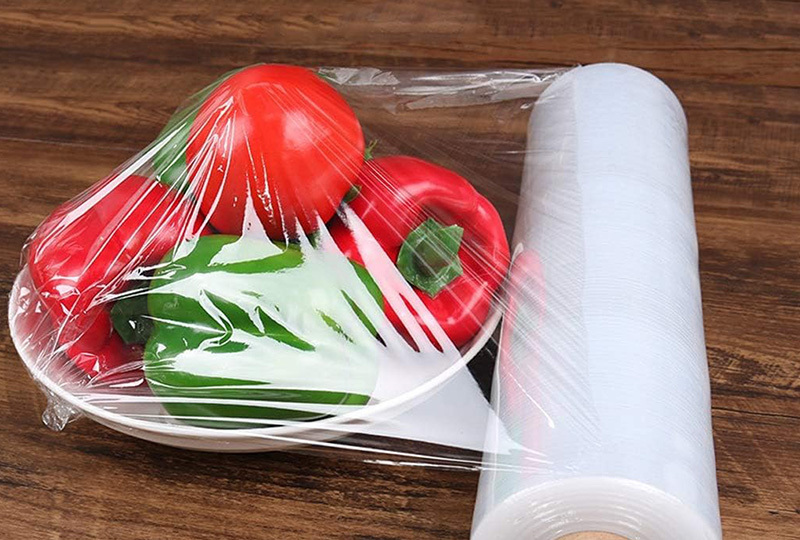PVC Cling Film: The Unseen Hero of Food Preservation
Release time:
Mar 18,2025
PVC Cling Film: The Unseen Hero of Food Preservation Introduction to PVC Cling Film In the realm of kitchen essentials, few items hold as much significance as **PVC cling film**. Often taken for granted, this flexible plastic wrap serves multiple purposes, primarily focused on **food preservation**. By forming an airtight seal around food items, it helps extend their shelf life, prevents spoilage,
PVC Cling Film: The Unseen Hero of Food Preservation
Introduction to PVC Cling Film
In the realm of kitchen essentials, few items hold as much significance as **PVC cling film**. Often taken for granted, this flexible plastic wrap serves multiple purposes, primarily focused on **food preservation**. By forming an airtight seal around food items, it helps extend their shelf life, prevents spoilage, and reduces waste. In this article, we will delve deep into the world of PVC cling film, discussing its advantages, uses, and tips for effective food storage.
What is PVC Cling Film?
PVC cling film, also known as polyvinyl chloride wrap, is a thin, transparent film made from PVC. Its unique properties allow it to cling tightly to surfaces, creating a protective barrier against air and moisture. This characteristic is crucial for **preserving food freshness**.
Composition and Safety of PVC Cling Film
The composition of PVC cling film includes polyvinyl chloride, which is a type of plastic. Regarded as food-safe when used properly, it's essential to use only products labeled for food storage. This ensures that you avoid contamination and maintain food safety.
How PVC Cling Film Works in Food Preservation
The primary function of PVC cling film is to provide an **airtight seal**. When wrapped around food, it minimizes exposure to air, which can cause oxidation and spoilage. The film also acts as a barrier against bacteria and other contaminants, making it an essential tool for anyone looking to extend the life of their perishables.
The Advantages of Using PVC Cling Film
Using PVC cling film in your kitchen comes with numerous benefits. Below are some of the key advantages that highlight its importance in food preservation.
1. Extended Shelf Life
One of the significant advantages of PVC cling film is its ability to extend the shelf life of various food items. By creating a seal that reduces air exposure, it slows down the process of spoilage, allowing you to keep fruits, vegetables, and leftovers fresh for longer periods.
2. Versatile Applications
PVC cling film is incredibly versatile. It can be used to wrap sandwiches, cover bowls, and store leftovers. Its adaptability makes it a go-to solution for various food storage needs, accommodating different shapes and sizes.
3. Cost-Effectiveness
Compared to other food preservation methods, PVC cling film is relatively inexpensive. A single roll can last for months, making it a budget-friendly option for keeping your food fresh without breaking the bank.
4. Easy to Use
The convenience of using PVC cling film cannot be overstated. Simply tear off a piece, wrap your food item, and press to seal. Its user-friendly design makes it accessible for everyone, even those who may not be adept in the kitchen.
5. Reduces Food Waste
By prolonging the freshness of food, PVC cling film helps reduce food waste. Whether you’re storing half an avocado or leftovers from dinner, using cling film can keep these items edible for a longer time, promoting sustainability in your kitchen.
Common Uses of PVC Cling Film in the Kitchen
Understanding the various applications of PVC cling film can help you make the most of this kitchen staple.
1. Storing Leftovers
After a delicious meal, leftovers are often left vulnerable to spoilage. Covering dishes with PVC cling film ensures they remain sealed and fresh, making them safe to eat later.
2. Wrapping Sandwiches and Snacks
For those on-the-go meals, wrapping sandwiches or snacks in cling film is a practical solution. It keeps them fresh and prevents them from getting soggy.
3. Protecting Fruits and Vegetables
Cutting fruits and vegetables exposes them to air, leading to faster spoilage. Wrapping cut produce in cling film can effectively slow down this process, allowing you to enjoy them for longer.
4. Covering Bowls and Plates
Instead of using a lid, covering bowls or plates with PVC cling film can provide a quick and efficient way to seal in freshness, especially for marinating purposes.
5. Freezer Storage
PVC cling film is also suitable for wrapping food before freezing. By minimizing air exposure, it helps prevent freezer burn, ensuring that your food maintains its quality.
Tips for Using PVC Cling Film Effectively
To maximize the benefits of PVC cling film, consider these practical tips.
1. Ensure a Tight Seal
For optimal preservation, ensure that the cling film clings tightly around the food or container, minimizing air pockets that could lead to spoilage.
2. Choose the Right Size
Select the appropriate width of cling film for your food items. Using a larger piece can result in waste, while a smaller piece may not provide adequate coverage.
3. Store Properly
Keep your PVC cling film in a cool, dry place away from direct sunlight. This helps maintain its clinginess and ensures it remains effective for food storage.
4. Avoid Contact with Raw Meat
While PVC cling film is food-safe, it’s advisable to avoid direct contact with raw meat due to the risk of cross-contamination. Instead, use it to cover cooked items or use separate wraps for raw products.
5. Dispose Responsibly
After use, dispose of PVC cling film responsibly. Check local recycling guidelines, as some areas may accept it for recycling while others may not.
Potential Concerns Regarding PVC Cling Film
While PVC cling film is a valuable tool in food preservation, it’s essential to address some potential concerns associated with its use.
1. Chemical Concerns
Some consumers worry about the safety of plastic products, especially when it comes to food. It's crucial to use cling film specifically labeled as food-safe. This ensures that no harmful chemicals leach into your food.
2. Environmental Impact
As with all plastic products, environmental concerns arise with PVC cling film. Explore eco-friendly alternatives, such as beeswax wraps or reusable silicone bags, if you're looking to minimize plastic usage.
Frequently Asked Questions (FAQs)
1. Is PVC cling film microwave-safe?
Yes, many PVC cling films are microwave-safe; however, it's vital to check the packaging for specific instructions. Avoid using cling film in the microwave if it's not labeled as such.
2. Can I use PVC cling film for freezing food?
Absolutely! PVC cling film is effective for freezing food, helping to prevent freezer burn and maintaining quality.
3. How do I know if my cling film is food-safe?
Always check the product packaging. Look for labels indicating that the cling film is suitable for food storage, which ensures safety.
4. Can PVC cling film be recycled?
Recycling capabilities vary by location. Check with your local recycling program to determine if PVC cling film is accepted.
5. Are there any alternatives to PVC cling film?
Yes, alternatives include beeswax wraps, silicone lids, and reusable storage bags, which can provide eco-friendly food storage solutions.
Conclusion
PVC cling film is truly the unseen hero of food preservation. Its ability to extend the shelf life of food, coupled with its versatility and cost-effectiveness, makes it an indispensable tool in any kitchen. By following best practices for its use, you can ensure that your food stays fresh for longer while also reducing waste. While concerns about plastic and chemicals are valid, choosing food-safe products and exploring eco-friendly alternatives can help maintain a balance between convenience and sustainability. Embrace the power of PVC cling film and enjoy the benefits of fresh, well-preserved food for you and your family!
Related News
What are the characteristics of PVC fresh-keeping film for food preservation
Can PVC plastic wrap be heated in a microwave oven?
What is the difference between PVC cling film and PE cling film
The choice of PVC cling film need to pay attention to what






